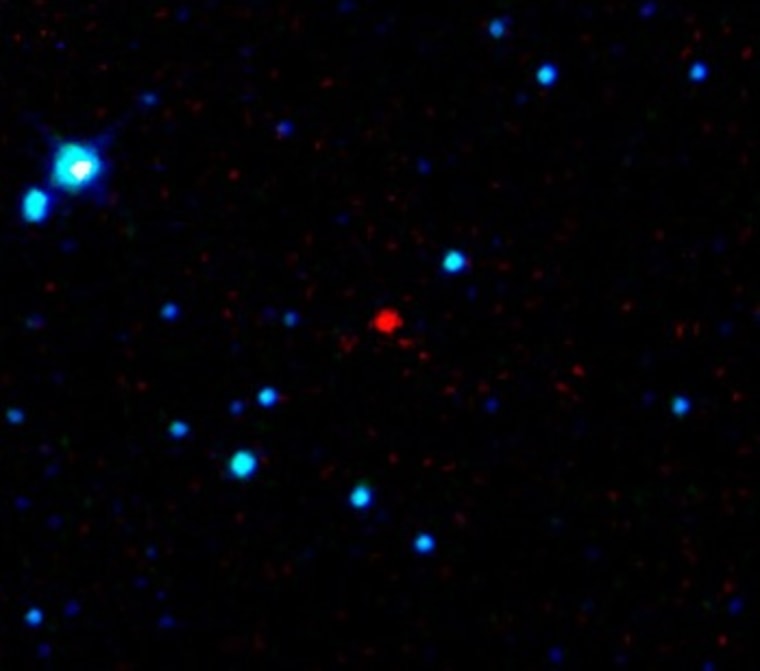NASA's latest sky-mapping space telescope has found an asteroid never-before-seen from Earth, the first of hundreds of new objects the telescope is expected to find.
The near-Earth object, designated 2010 AB78, was discovered by NASA's Wide-field Infrared Survey Explorer, or WISE, on Jan. 12. The space rock doesn't appear to pose any threat to Earth, NASA officials said.
The newfound asteroid is currently about 98 million miles (158 million km) from Earth and has an estimated diameter of 0.6 miles (I km).
The rock comes as close to the sun as Earth does, but because it circles the sun in an elliptical orbit tilted with respect to the Earth's orbital plane, the asteroid isn't thought to come near enough to our planet to pose a hazard. Scientists will monitor the asteroid though to make sure it doesn't pose an impact threat.
The WISE mission's software was able to pick out the object moving against a background of stationary stars. Researchers confirmed the object's identity with the University of Hawaii's 2.2-meter visible-light telescope near the summit of Mauna Kea.
WISE is expected to find about 100 to 1,000 previously undiscovered asteroid in the belt between Mars and Jupiter, as well as hundreds of new near-Earth asteroids during its all-sky survey, which began on Jan. 14.
A new report issued last week found that NASA's efforts at finding near-Earth asteroids that could potentially pose a threat to Earth are not sufficient.
NASA's asteroid and near-Earth object experts have said that the agency has found about 85 percent of the largest nearby asteroids, ones that are a half-mile (1 km) wide or larger. But only 15 percent of the 460-foot wide asteroids near Earth have been discovered and tracked to date, and just 5 percent of nearby space rocks about 164 feet (50 meters) across have been found.
WISE will also spot millions of new stars and galaxies as it scans the sky in the infrared wavelengths every 11 seconds as it orbits the Earth. The spacecraft launched from Vandenberg Air Force Base in California in December 2009.
WISE's first sky survey should be complete in about six months, with a second to follow through the fall. A preliminary look at WISE's sky maps is expected in April 2011, with the final cosmic atlas due out in March 2012.
But a selection of choice images collected during the survey will be released earlier beginning in February, mission managers said.
